Check your Google account settings
open allIf you use Chrome with a Google account, privacy and safety of your data in the browser depends directly on your account’s security. Therefore, check your Google account settings in addition to your Chrome settings.
How to protect yourself from malicious websites and programs
open allWhat for: To detect and solve security problems.
Chrome can run a special check to detect password breaches and unsafe extensions, search for latest updates, and enable warnings about malicious websites:
- Click the three dots in the upper right corner of the screen;
- Select Settings;

- Go to the Safety check section;
- Click Check now.
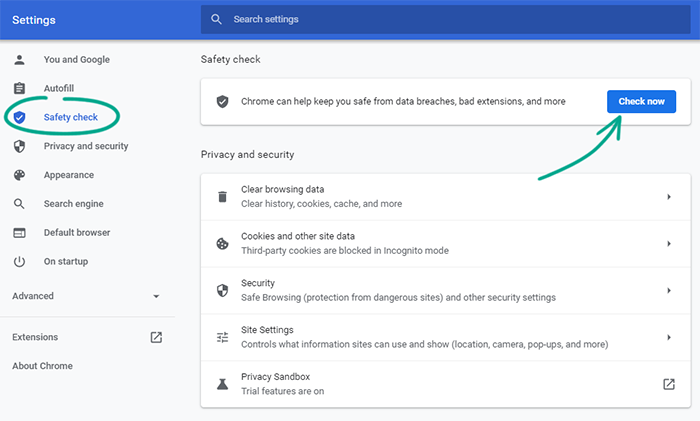
Keep in mind that Chrome only runs a basic safety check and does not scan your computer for malware. Use an antivirus to protect your device.
What for: To find a balance between privacy and security.
Chrome can automatically detect phishing sites, monitor password breaches, and use other security mechanisms. However, a stricter security policy means that Google will get more data about your system and Internet use, which can affect your privacy. For instance, Google may learn which sites you visit, get samples of the files you download, data about your system, and other important information. To choose a security level:
- Click the three dots in the upper right corner of the screen;
- Select Settings;
- Go to the Privacy and security section;
- Select Security.
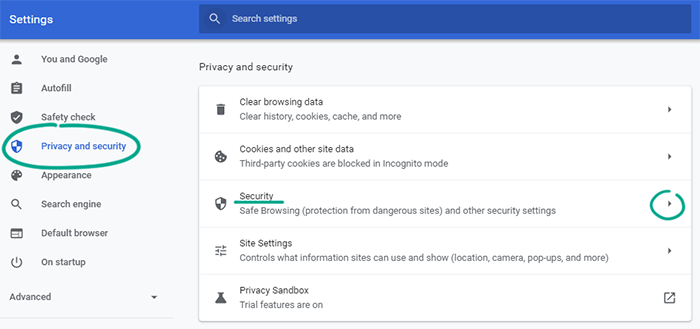
- If you do not want to share extra information with Google, click Standard protection. Chrome will then check the URLs of the pages you visit against a list of malicious resources and warn you about hazards. A site’s address and samples of its content will only be sent to Google if you download a malicious file or the site tries to steal your login credentials. You can turn on enhanced data collection if you wish, or decline it for greater privacy:
- Click Help improve security on the web for everyone option to let Chrome send the URL and a portion of the content for both malicious sites and other potentially suspicious resources you view to Google. If Chrome discovers unsafe software on your computer, it will send file samples and system registry entries to Google. This information is used for improving security so Chrome learns to identify threats more accurately.
- Click Warn you if passwords are exposed in a data breach option and Chrome will check the passwords you save in the browser against a list of stolen ones from time to time. In order to perform the check, the browser encrypts your login credentials and sends them to Google.
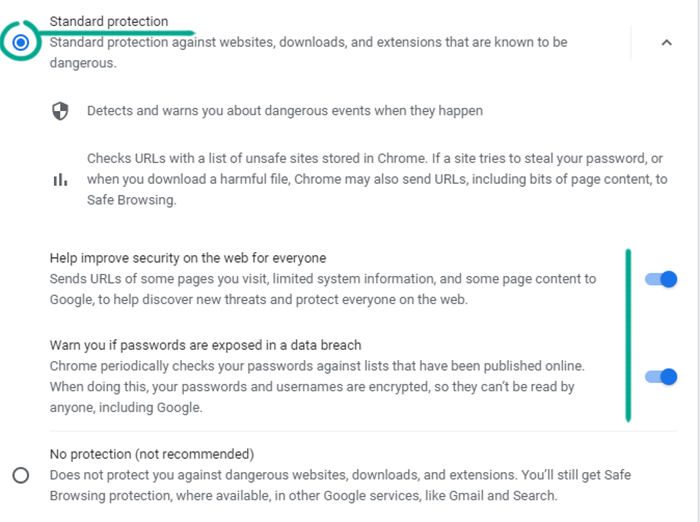
- If you prefer safety to privacy, you may want to share all the data Google needs to enhance security. Then choose Enhanced protection, and the browser will monitor password breaches and send some items to be checked, such as the addresses of some of the pages you visit, samples of content and downloaded files, information about extension activity, and system data.
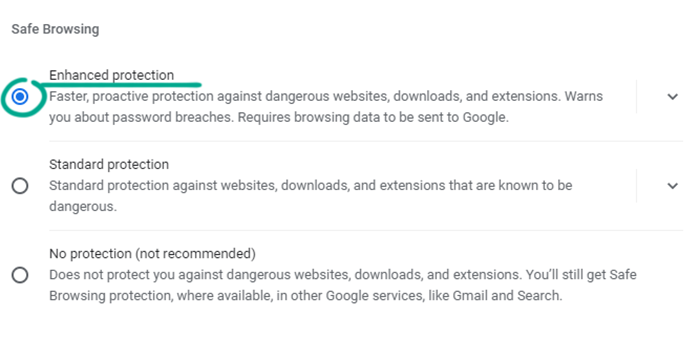
You can also completely turn off Chrome protection for greater privacy, but we do not recommend deactivating the browser’s built-in security features.
What for: To protect Chrome from threats.
Chrome can scan your device for malware and riskware, such as advertising software that secretly changes your startup page. By default, the browser automatically checks your computer once every few days, but you can launch a scan manually at any time for greater security.
- Click the three dots in the upper right corner of the screen;
- Select Settings;
- In the menu on the left, click Advanced and go to the Reset and clean up section;
- Select Clean up computer.
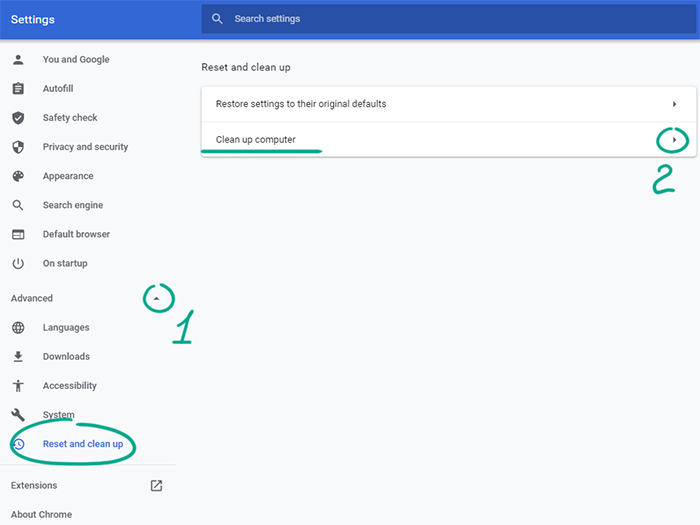
- If you do not want to share scan results and your device information with Google, clear the box next to Report details to Google about harmful software, system settings, and processes that were found on your computer during this cleanup;
- Click Find and wait for the scan to be completed.

Keep in mind that Chrome only detects the programs which negatively affect its performance, for example, by changing your home page to a website with ads. Chrome is not designed to protect against ransomware, banking trojans, and many other forms of malware, so it cannot be used instead of an antivirus.
How to hide your data from prying eyes
open allWhat for: To leave no tracks.
Google Chrome usually saves information about the pages you visit, the passwords you enter, the permissions you give, cookie, and some other website data. If you want to hide these — for example, when using someone else's computer — browse in incognito mode. Google Chrome will delete all login credentials, browser history, and site data immediately after you close all program windows launched in incognito mode.
To turn on incognito mode:
- Click the three dots in the upper right corner of the screen;
- Select New Incognito window.
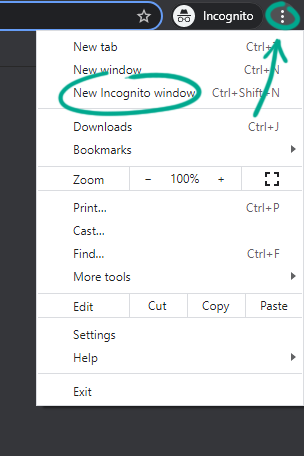
How to keep corporations out of your business
open allWhat for: To get rid of intrusive notifications and protect yourself from malicious extensions.
By default, some Chrome background services keep running even if you have closed the browser. For example, websites can send you notifications even if you have not launched the program. However, some plug-ins may abuse this feature to spy on you, secretly open malicious pages, or send you spam. To stop Chrome from running in the background:
- Click the three dots in the upper right corner of the screen;
- Select Settings;
- In the menu on the left, click Advanced and go to the System section;
- If Continue running background apps when Google Chrome is closed is active, turn it off.
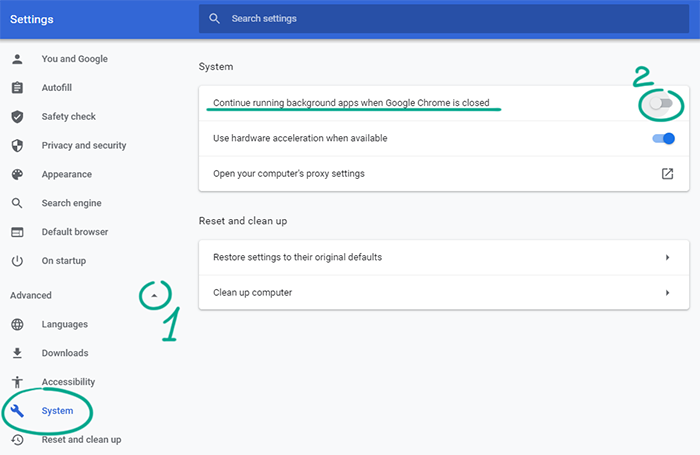
Downside: You will not receive notifications when Chrome is closed.
How to protect your data
open allWhat for: To protect against leaks.
When you sign in to a website, Google Chrome prompts you to save your password. This allows it to fill in your login credentials for you next time. Chrome can check whether your passwords have been exposed in a data leak. How to start a scan:
- Click the three dots in the upper right corner of the screen;
- Select Settings;
- Go to the Autofill section;
- Select Passwords;

- Click Check passwords.
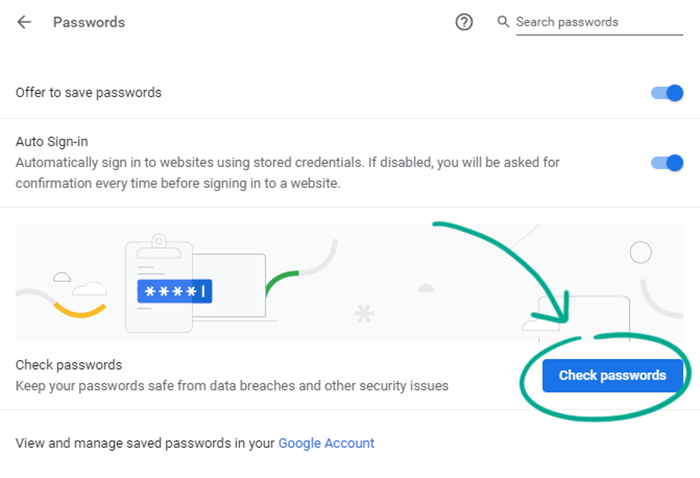
If your login credentials have been leaked, you’ll see a message about it. If so, change the vulnerable passwords to something unique and secure as soon as possible.
For better security and specifically to get notifications if your passwords are discovered in public sources, turn on advanced protection mode.




